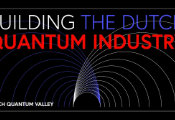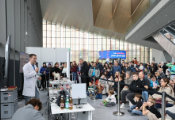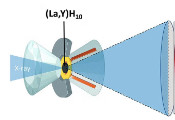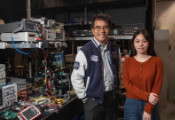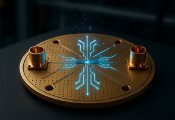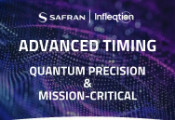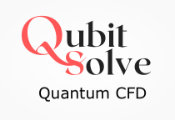NQCP Photonic Pilot Line
November 28, 2024 -- The Photonic Pilot Line team here at the Novo Nordisk Foundation Quantum Computing Programme (NQCP), led by Associate Professor Stefano Paesani, is dedicated to advancing the development of quantum photonic components essential for fault-tolerant quantum computing processors. The team’s work involves creating innovative architectures for quantum photonic integrated circuits, including single photon emitters, waveguides, and detectors. Through close collaborations with other research groups and engineering teams, they are pushing the boundaries of quantum optical science and technology.
They sat down with Stefano to talk about the group structure and what the projects of a photonics scientist can look like.
Hi Stefano, thanks a lot for taking the time. Can you provide a brief overview of the Photonics team and its main objectives?
Stefano Paesani: Our Nanophotonics group is fundamentally focused on quantum computing, specifically using single photons—individual particles of light—to perform quantum computations. The primary objective is to develop the technology to efficiently generate, manipulate, and process single photons at high speeds, which is essential for photonic quantum computing. This work forms one of the core pillars of our broader quantum computing efforts.
What are the key facilities and technologies for the Nanophotonics group? How do these facilities strengthen your research capabilities?
Stefano Paesani: We have recently set up brand new labs equipped with advanced cryogenic systems, which are crucial for our experimental activities, particularly in quantum characterization and fabrication. These state-of-the-art facilities allow us to conduct precise and controlled experiments, necessary for the development of our quantum photonic technologies. Additionally, we have access to a range of characterization tools within the broader NQCP facilities, to further support our research and development efforts.
How big is the Nanophotonics group and what does each member do?
Stefano Paesani: Currently, our group consists of seven members, including myself. The team is composed of two engineers, one postdoc, and several PhD students who are actively engaged in both theoretical and experimental aspects of our research. Every member plays a crucial role, with their own responsibilities while still being closely guided to explore new ideas as they arise. The engineers focus on the technical and engineering challenges, providing the necessary infrastructure to realize our experimental goals.
Will you share some of the current projects you are working on in the Quantum Nanophotonics group?
Stefano Paesani: Right now, a significant part of our work is focused on developing Quantum Emitters – single artificial atoms embedded in optical nanostructures. This involves developing tools and methodologies to efficiently categorize a large number of devices. This is a complex and challenging task. We are developing a new platform where these quantum emitters are embedded in silicon, with the goal to get scalable quantum photonic applications. Additionally, we’re exploring the integration of photon emitters with complex photonic circuits, including silicon waveguides and fast optical switches. This work lays the foundation for more advanced quantum computing experiments, such as quantum error correction.
What are the long term goals and what exiting projects do you have in the pipeline?
Stefano Paesani: In the coming years, we aim to further develop these building blocks into fully operational quantum computing technologies. We are particularly excited about experiments that will enable quantum error correction and fault-tolerant quantum operations on photonic chips. This will be a major milestone, not just for our group, but for the entire field of quantum photonics. Our long-term goal is to establish a robust platform for quantum photonic computing that can be scaled up and applied to real-world problems. While our current focus is on developing the essential components, we anticipate that in the next few years, our work will significantly impact the broader field of quantum photonics, particularly in demonstrating the viability of photonic quantum computing as a competitive approach.
Is there anything else you would like to add about the group’s mission, or your plans for the future?
Stefano Paesani: This is such an exciting time to be working in quantum photonics, with so many breakthroughs on the horizon. For students and young researchers, it’s a rare chance to be part of groundbreaking work that could redefine how we understand and use quantum technologies. Our team is eager to see what the future holds and we arededicated to pushing the boundaries of what’s possible in this field.

